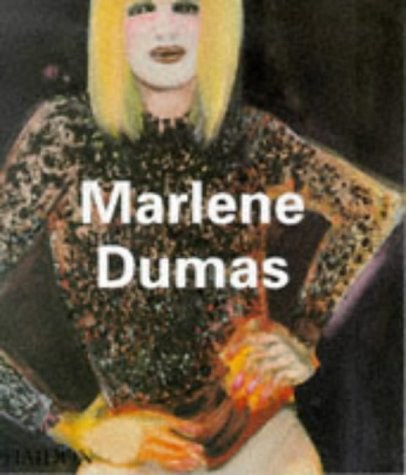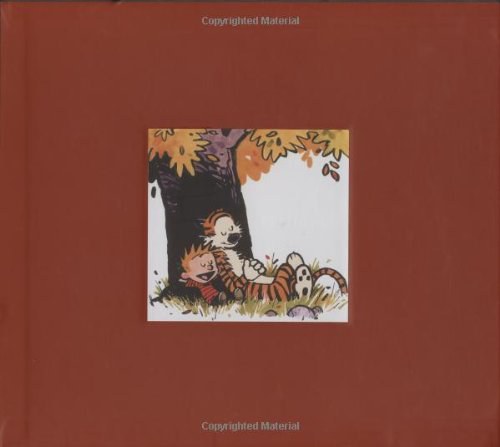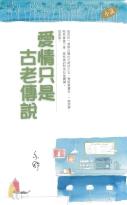
Eugene Y·Wang《Shaping the Lotus Sutra》
作者:Eugene Y·Wang
出版社:University of Washington Press
出版年:2007-2-15
评分:0.0
ISBN:9780295986852
所属分类:艺术音乐
书刊介绍
内容简介
The Lotus Sutra has been the most widely read and most revered Buddhist scripture in East Asia since its translation in the third century. The miracles and parables in the "king of sutras" inspired a variety of images in China, in particular the sweeping compositions known as transformation tableaux that developed between the seventh and ninth centuries. Surviving examples in murals painted on cave walls or carved in relief on Buddhist monuments depict celestial journeys, bodily metamorphoses, cycles of rebirth, and the achievement of nirvana. Yet the cosmos revealed in these tableaux is strikingly different from that found in the text of the sutra. Shaping the Lotus Sutra explores this visual world.
Challenging long-held assumptions about Buddhist art, Eugene Wang treats it as a window to an animated and spirited world. Rather than focus on individual murals as isolated compositions, Wang views the entire body of pictures adorning a cave shrine or a pagoda as a visual mapping of an imaginary topography that encompasses different temporal and spatial domains. He demonstrates that the text of the Lotus Sutra does not fully explain the pictures and that a picture, or a series of them, constitutes its own "text." In exploring how religious pictures sublimate cultural aspirations, he shows that they can serve both political and religious agendas and that different social forces can co-exist within the same visual program. These pictures inspired meditative journeys through sophisticated formal devices such as mirroring, mapping, and spatial programming - analytical categories newly identified by Wang.
The book examines murals in cave shrines at Binglingsi and Dunhuang in northwestern China and relief sculptures in the grottoes of Yungang in Shanxi, on stelae from Sichuan, and on the Dragon-and-Tiger pagoda in Shandong, among other sites. By tracing formal impulses in medieval Chinese picture-making, such as topographic mapping and pictorial illusionism, the author pieces together a wide range of visual evidence and textual sources to reconstruct the medieval Chinese cognitive style and mental world. The book is ultimately a history of the Chinese imagination.
作品目录
Acknowledgments ix
Introduction xiii
The Many Treasures Stupa: Visionary Signpost and Cognitive Model 3
The Apparitional Stupa 3
Images of the Many Treasures Stupa at Yungang: Cave 5 6
The Many Treasures Stupa Scene in Cave 169 at Binglingsi 13
Two Women's Vision and Threshold Moment 24
A Memorial Scenario 29
Beyond Narrative Space: Two Northern Wei Stelae 47
The Pivot of the Symbolic Universe 52
Textual Space and Pictorial Reconstitution 67
Imaginary Space in Texts and Pictures 67
Imaginary Topography and Protopicture 68
The Lotus Sutra as a Spatial and Temporal Fiction: Problems for the Painter 79
The Duplicity of Pictorial "Illustration'': Nirvana with a Royal Face 82
A Buddhist Paradise without a Buddha 102
Which One of the Three? Architectural Forms as Moral Choices 112
The Rhetoric of the Formal Design 119
The Circumstantial World and the Numinous Realm 122
The Royal Scenario and Circumstantial Referentiality 122
The Monastery of Reverence and Love (Jing'aisi) 132
The Yin Family at Dunhuang 139
Two Lotus Sutra Tableaux; Two Moods 141
The Daoist Turn circa 700 C.E. 146
Postmortem Scenario 151
The Patron Family's Agenda 176
The Ritual Space of the Cave Shrine 178
Mapping and Transformation 182
Enchanted and Generative Topography of Transformation 183
Numinous Vulture Peak and the Man-Bird Mountain 192
The Incantatory Landscape 206
The Guanyin Tableaux from Wanfosi 219
The Talismanic Landscape under the Tang 228
Mirroring and Transformation 238
Seeing as Piercing 238
The Shadow Image 245
The Mirror Image 247
Mirror Hall 256
Cave Shrine as Mirror Hall 262
Mirror and Gateway 277
Mystic Vision 292
Grotto Heaven 310
Chronotope and Heterotopia 317
The Lotus Sutra Topography as Threshold to Other Worlds 317
Pagodas, Miracles, Transformation Tableaux 321
Longhuta: The Iconographic Program of Its Relief Sculptures 330
The Buddhas of the Four Directions and the Rhetoric of Time 340
Temporal and Spatial Fiction of the Relic Pagoda 347
Chronotope and Traditional Cosmological Scheme 353
Between Past and Future 361
Here and There: From Subjugation of Demons to the Amitabha Pure Land 364
Transformation and the Inconceivable 371
Walking and Circumambulation 376
Agency of Transformation 380
Competing Pure Lands 382
The Primacy of the Tusita Heaven in the Longhuta 386
The Dense and the Sparse: Two Stylistic Modes and Their Implications 396
List of Abbreviations 398
Notes 399
Chinese Glossary 442
Bibliography 447
Illustration Credits 469
Index 475
相关推荐
-

人间词话(2020版)
《人间词话(2020版)》内容简介:《人间词话》,晚清三大词话之一,才情高绝,被很多人奉为古典文学批评里程碑式的作品。王国维对
-

杭海《妆匣遗珍》
银饰是明清至民国时期中国妇女最常用的饰物之一,种类繁多,数量巨大。民国以后,随着生活方式的激变及女性妆饰的日渐西化,城市
-

触摸琴史-近现代琴史叙事
触摸琴史-近现代琴史叙事 本书特色 古琴,作为中国古老的乐器,历千年而不辍,成为中国文人怡情养性、励志修心的重要组成部分。其间的相关文献、曲目积累、乐律学、传承...
-

《就是要整理 : 艺术》书籍《就是要整理 : 艺术》
★德国销量50余万册★德文版已授权美国和全部英语市场、日本、荷兰、瑞典、台湾、法国、意大利等多个国家和地区★作者乌尔苏斯·
-

希腊三部曲
《希腊三部曲》内容简介:让·季洛杜以古希腊经典戏剧为蓝本,重新创作了多部现代剧,包括这三部剧作《安菲特律翁三十八世》《特洛
-

王昕《欧洲爵士素描》
王昕的《欧洲爵士素描》是当下对于欧洲爵士乐的最重要述评读本。诞生在美洲大陆上的爵士乐,事实上在欧洲充当了古典音乐的另一种
-

雷雨·日出
雷雨·日出 内容简介 本书汇聚了曹禺先生的两部*具代表性的名作《雷雨》和《日出》。《雷雨》:故事发生在20年代的天津。周公馆的老爷周朴园因江桥事件的牵连去向不明...
-

崔莹《英国插画师》
格林纳威笔下的小孩子,让我们看到曾经笨拙可爱的自己,韦恩画出的神态各异的猫先生,既是忧郁,也是解脱,波特小姐带来了小兔彼
-

西洋乐器演奏与编配技法研究
西洋乐器演奏与编配技法研究 内容简介 西洋管弦乐队配器法在教学中是重要学科,在学术上是重要课题。学习管弦乐器,不但要掌握其编配方法,还要掌握各类西洋乐器的演奏方...
-

戴敦邦《红楼梦群芳图谱》
《红楼梦群芳图谱》讲述了:以树木花卉比喻女人,这是我国传统的审美意识。《红楼梦》里的大观园,既是女儿国,又是百花园、据统
-

邱振中《神居何所》
作者在对书法基本性质进行深入研究的基础上,对与书法有关的各种具体问题进行了讨论,其中包括书法史,现代创作理论、感觉模式、
-

秘境寻踪
《秘境寻踪》内容简介:在8年前一次偶然的极地旅行中,作者无意中踏进神奇的野生动物世界,最终成为一名生态摄影师和自然爱好者。本
-

欧里庇得斯悲剧集(套装全十八册)
《欧里庇得斯悲剧集(套装全十八册)》内容简介:古希腊经典作品,西方文明的源头与第一次巅峰 油画、版画、雕塑等精美插图,生动重
-

阿瑟·C·丹托《艺术的终结之后》
本书就是关于艺术史哲学、叙事结构、艺术终结以及艺术批评原理的。它要问的是像里德那样的艺术究竟是如何地成为历史可能性、这样
-
![[美] 杰弗里·迈耶斯《印象派四重奏》](http://oss.shudanhao.com/caiji/chazidian/2023/26933.jpg)
[美] 杰弗里·迈耶斯《印象派四重奏》
传记大师杰弗里•迈耶斯拂去时间的灰烬,将“印象派”四天才带出阴影。印象派的大名如雷贯耳,可是,我们对于印象派巨匠们的了解,
-

分心的孩子这样教
《分心的孩子这样教》内容简介:孩子,你能不能不丢三落四、不磨磨蹭蹭,老实坐一会儿? 你为什么不能像其他孩子那样乖乖的?我该拿
-

音乐绘本亲子读:奇妙的打击乐
《音乐绘本亲子读:奇妙的打击乐》内容简介:马克斯正在练习敲军鼓。今天他有一个特殊的任务:他要模仿火车头的声音。奥利弗·施泰
-

沈爱凤《从青金石之路到丝绸之路:西亚.中亚与亚欧草原古代艺术溯源(上.下)》
《从青金石之路到丝绸之路:西亚中亚与亚欧草原古代艺术溯源(上下)》是一部从艺术的视角创作的学术性、可读性兼顾,图文并茂且独具
-

调性和声及20世纪音乐概述
斯蒂凡·库斯特卡在科罗拉多大学和得克萨斯大学获音乐学士和硕士学位,在威斯康辛大学获音乐理论哲学博士学位。1969年到1973年,他曾任伊斯特曼音乐学院教师,此后...
-
![[美] 格特鲁德·斯泰因《论毕加索》](http://oss.shudanhao.com/caiji/chazidian/2023/37903.jpg)
[美] 格特鲁德·斯泰因《论毕加索》
《论毕加索》是格特鲁德·斯泰因对从1900年至1937年间她所认识的毕加索的记录,形式上可被归为长篇散文的范畴。书中记述了包括毕





